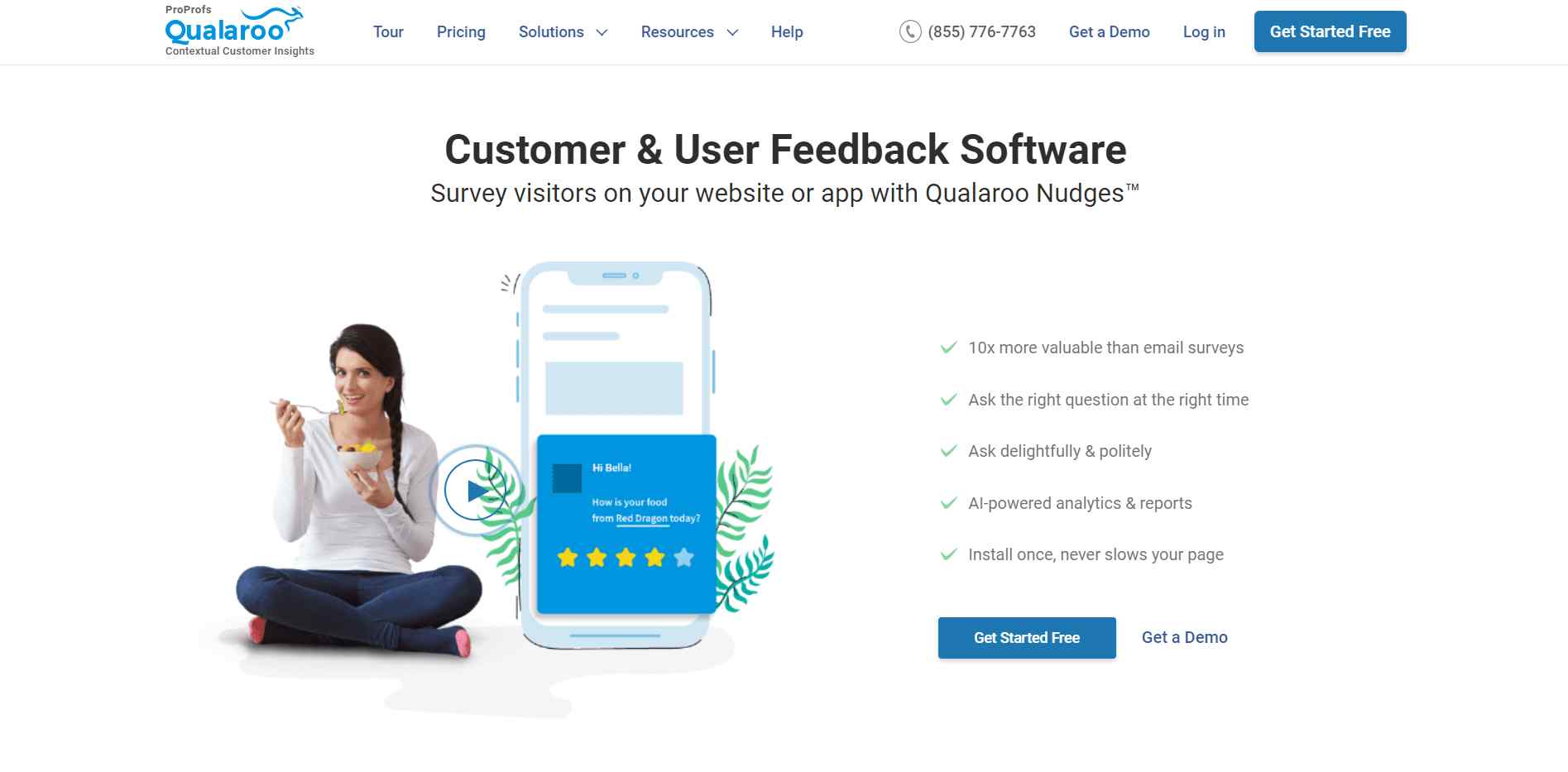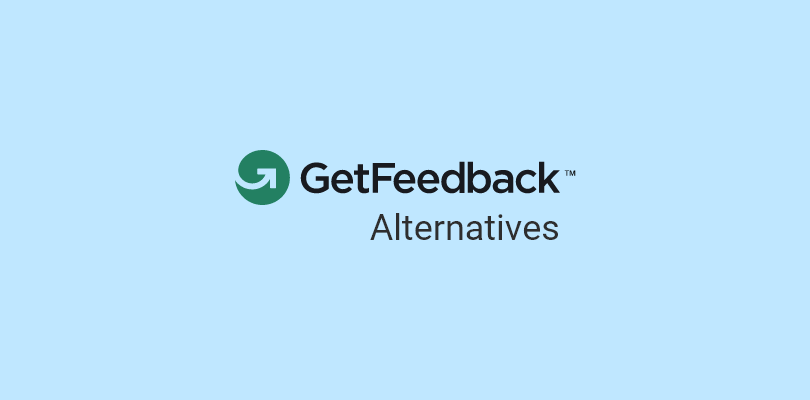Looking for a good Delighted alternative?
While Delighted is great for capturing customer feedback, relying only on it can limit your understanding of customer sentiment.
Luckily, there are many other survey tools to choose from that can also help you gain valuable customer insights.
To help you out, I’ve put together a list of 8 great Delighted alternatives based on my own experience, research, and industry recommendations.
These tools stand out from the crowd and offer you the best value for your money.
Find the 8 Best Delighted Alternatives for Your Business
To grow my brand, I have experimented with several customer feedback tools. And in the process, I have identified some better alternatives to Delighted. I am confident you will find the perfect tool among these Delighted competitors.
1. Qualaroo: Best for Customizable and Contextual Surveys
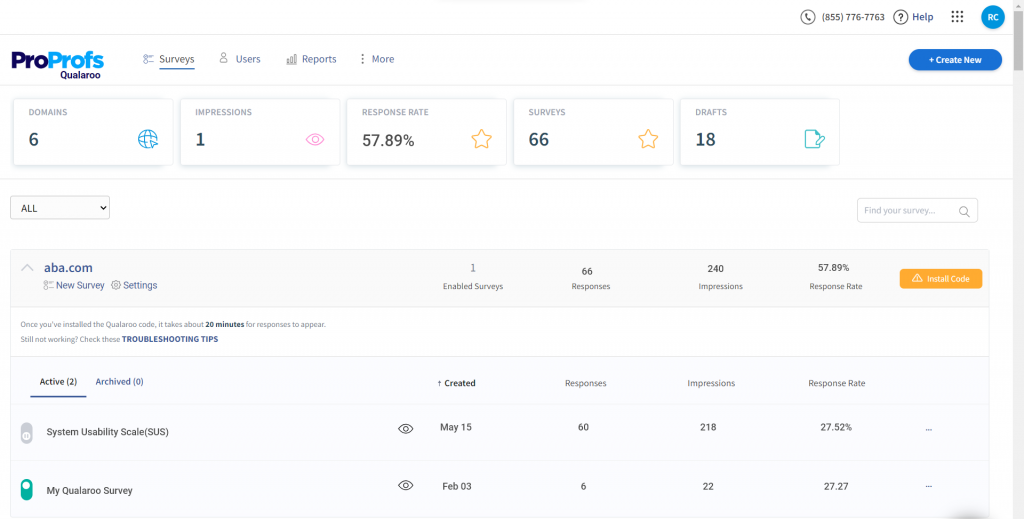
Qualaroo is my top pick as a Delighted alternative, and I currently use it as my go-to customer survey tool. I love how flexible and customizable it is, allowing me to create surveys consistent with my brand’s overall design.
With Qualaroo’s powerful user engagement tool, I can easily engage with my customers at crucial moments, providing an enhanced user experience.
Qualaroo seamlessly integrates with popular CRMs such as Zapier and HubSpot, which has been an added advantage in closing the feedback loop.
What you’ll like:
- Advanced targeting to reach users based on location, activity, etc.
- Sentiment analysis to take action based on the survey results.
- In-app surveys to enhance user experience and engagement on your mobile apps and products.
- Pre-designed survey templates to start collecting feedback in real time.
- Skip and branching logic to ensure the right questions are posed for quality insights.
- NPS surveys with automatic NPS calculator.
- Clone your surveys to save time.
- Response tagging and labeling so you can direct the feedback to respective departments and close the feedback loop.
What you won’t like:
- Users can’t add media to their responses.
- It doesn’t analyze social media data.
Pricing: Qualaroo offers a forever free plan for startups and small businesses with all premium features. Paid starts at $19.99/month.
You May Also Like: 12+ Best Online Survey Tools to Gather Feedback
2. SurveyMonkey: Best for Recommending Effective Question Types
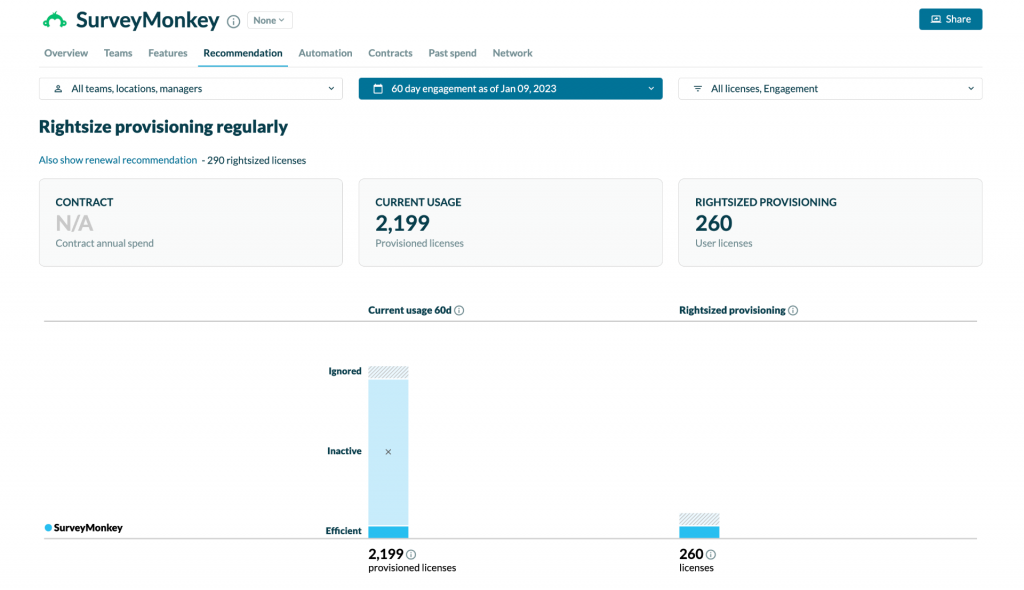
I recently used SurveyMonkey and was amazed by its “Question & Answer Genius” feature. It made creating my surveys effortless!
The tool recommended the best follow-up question types based on my previous questions, which saved me a lot of time. I felt like I had a survey expert by my side throughout the process, ensuring that every question was crafted to elicit the most meaningful responses from my audience.
What I loved most about this feature is that it not only suggested questions but also recommended a range of answer options that helped me eliminate bias and capture accurate data. This made it easier for my respondents to express their true opinions without any undue influence.
What you’ll like:
- Question bank to access expertly crafted questions for more valuable responses.
- Survey logic to ensure your respondents only see relevant question types.
- Recurring surveys to share the same survey over a given period of time.
- Survey reminders to increase the response rate of your customer surveys.
- Net Promoter Score (NPS) measurement to understand customer satisfaction.
What you won’t like:
- The survey logic is complex to implement.
- Limited options for advanced analytics and visualizations.
Pricing: Starts at $31/month.
Related Post: 15 Best SurveyMonkey Alternatives With Pricing and Features
3. CheckMarket: Best for Page Display Logic
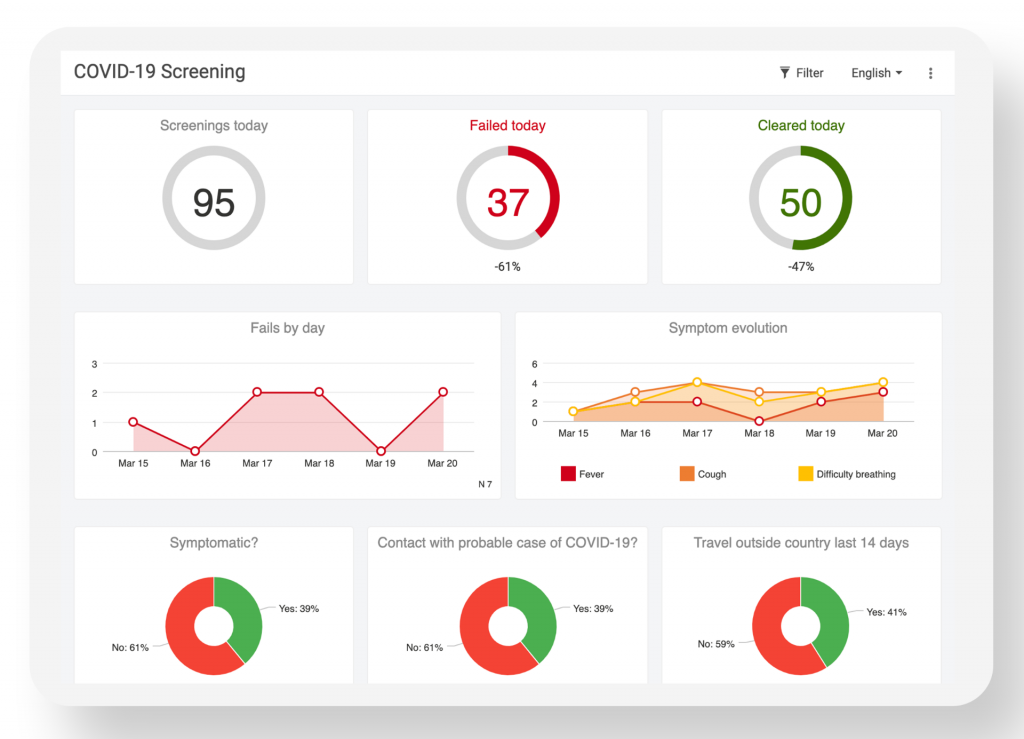
Image Source: CheckMarket
CheckMarket is a powerful survey design tool that lets me customize every aspect of my surveys, from the layout and branding to the question types and logic. With its intuitive and user-friendly interface, I could easily create surveys that look great and capture my audience’s attention.
But what I truly loved about CheckMarket was its page display logic feature, as it allowed me to show or hide pages for respondents based on their previous answers or other metadata.
This feature ensured that my surveys were relevant and engaging, saving valuable time and effort for me and my respondents.
What you’ll like:
- Multiple question types to gather specific and relevant data from users.
- Real-time notifications to help you identify important response patterns.
- Survey distribution to collect responses from your target groups via multiple channels.
- Smart reporting to produce statistically significant insights that lead to action.
- Multiple language support to reach diverse audiences across the globe.
What you won’t like:
- Customization options are not always flexible.
- The technical aspects of the tool are too complex.
Pricing: Custom Pricing.
Read Also : 19 Best Net Promoter Score Survey (NPS) Tools & Software
4. Qualtrics: Best for Comprehensive Research Surveys
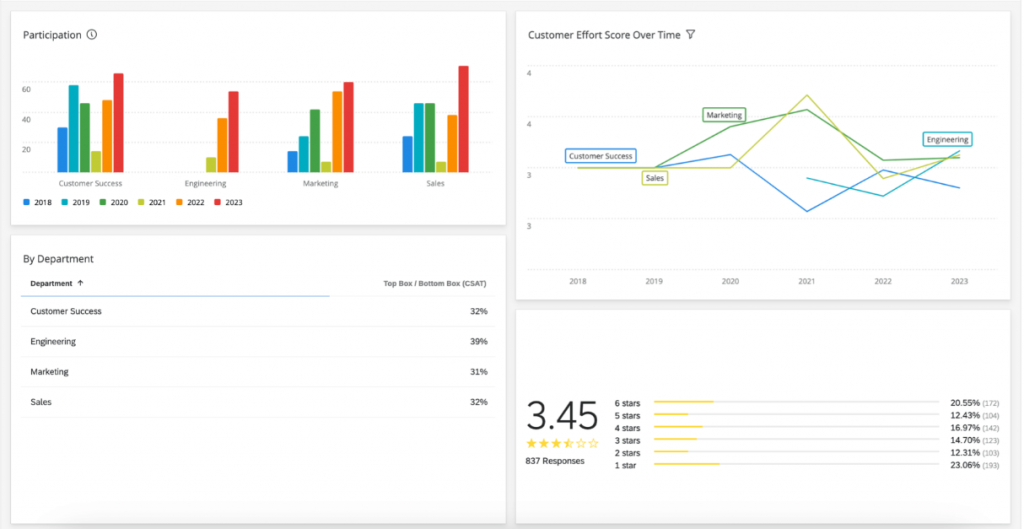
Image Source: Qualtrics
Qualtrics is a valuable Delighted alternative that helped me uncover the stories concealed within my data and create a compelling message to engage with my audience. All thanks to its Driver IQ test.
I simply selected the outcome variable and the predictor variables from my survey data. Driver iQ then automatically ran a regression analysis and calculated each predictor variable’s relative importance and impact on the outcome variable.
Driver iQ presented the results in a clear and intuitive way, using charts, tables, and text. It highlighted the key drivers of customer satisfaction and loyalty and ranked them according to their importance and impact.
What you’ll like:
- Question piping to ask follow-up questions based on previous question choices.
- Predictive analysis for proactive decision-making based on real-time data.
- Feedback data visualization to quickly grasp insights for informed decision-making.
- Survey collaboration to share your projects with others in real time.
- SPSS tool to export your data to other software.
What you won’t like:
- Sometimes, it delays the responses received from customers.
- It has problems with exporting data to CRMs.
- Not suitable for small businesses and startups.
Pricing: Custom Pricing.
Also read: 11 Best Qualtrics Alternatives & Competitor
5. Typeform: Best for Lead Qualification
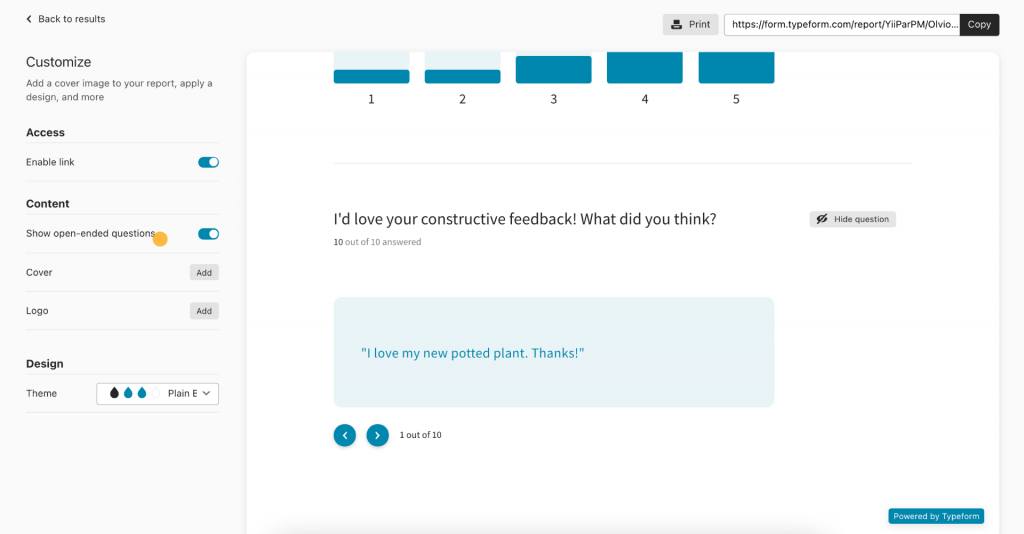
Image Source: Typeform
With Typeform, creating surveys was effortless. I didn’t need to spend hours designing surveys. Instead, I focused on what mattered the most – collecting the data I needed.
The software suggested relevant answer options for multiple-choice and drop-down questions, making my survey creation process faster.
But Typeform’s lead qualification and scoring functionality is the real deal. This AI-powered feature allowed me to describe my ideal leads. It helped me create a set of questions to qualify potential customers who were genuinely interested in purchasing.
This took the guesswork out of lead scoring and made it easy for me to focus on high-quality leads, ultimately saving me time and improving my conversation rates.
What you’ll like:
- Logic jump to create a conversational and personalized user experience.
- 500+ integrations to automate workflow and enhance functionality.
- Hundreds of ready-made survey templates for different purposes, like NPS, CES, and CSAT.
- Advanced customization to enhance the look and feel of your surveys.
- Versatile question types, including multiple-choice, open-ended, rating scales, etc.
What you won’t like:
- The support team is not very responsive.
- The customization options are not as good as its competitors.
Pricing: Starts from $25/month.
Also Read: 11 Best Typeform Alternatives (Pricing & Features)
6. Hotjar: Best for Visualizing User Behavior
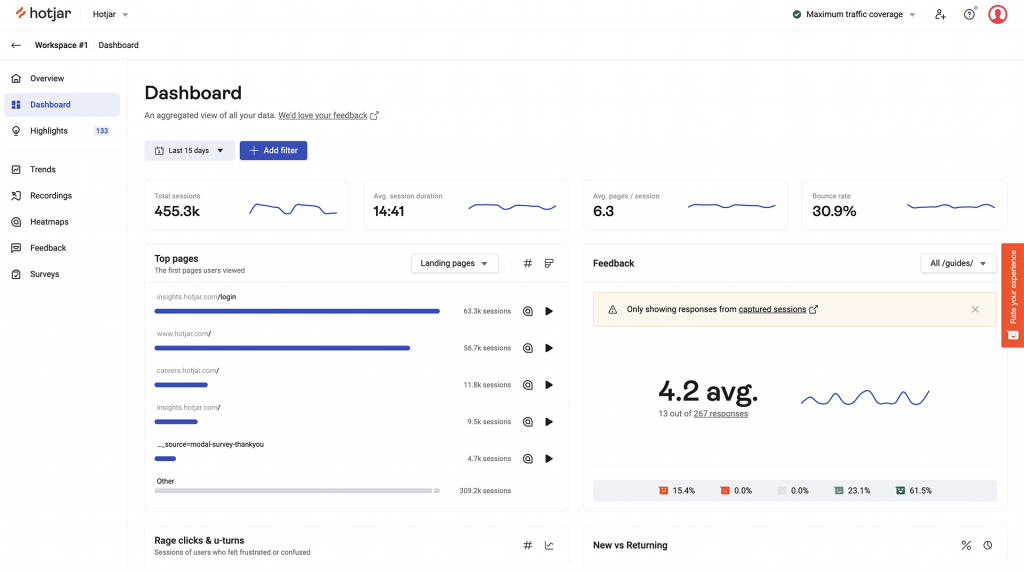
At the suggestion of my peer, I tried Hotjar’s basic plan. I was immediately impressed by its heat maps feature, which provides a visual representation of how users click, move, and scroll on web pages.
With heatmaps, I could see which parts of my content are most engaging, which links are most clicked, and which areas need improvement. I could also segment my heatmaps by device, browser, country, and other criteria to get more insights.
Besides the behavioral analysis, another feature that makes Hotjar a great Delighted alternative is the user feedback widgets. It allowed me to collect feedback from the visitors directly on my website. I could use surveys, polls, or feedback buttons to ask questions, gather opinions, or measure satisfaction.
What you’ll like:
- NPS to understand your customer’s likelihood of recommending your product.
- Trigger surveys to collect meaningful feedback at crucial moments.
- Comprehensive data analytics to examine all the data in one place.
- Survey Customization to match your brand’s style and design.
- Session recording filtration based on behaviors like rage clicks and errors.
What you won’t like:
- Hotjar’s interface and setup are quite overwhelming.
- Limited customization for feedback widgets.
- You can’t track users across multiple domains.
Pricing: Starts at $32 per month.
This Might Interest You: Qualaroo vs. Hotjar - Why Teams Choose Qualaroo Over Hotjar
7. GetFeedback: Best for Targeted Surveys
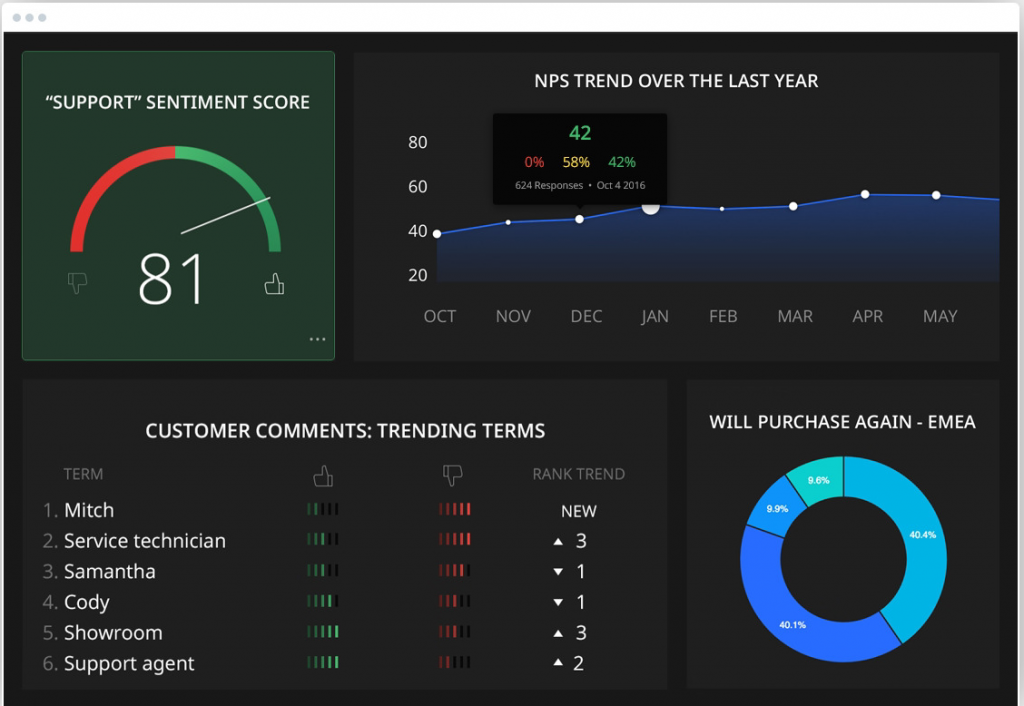
A friend of mine was using GetFeedback to create targeted surveys. Here are his words:
“I used GetFeedback’s targeted surveys to collect feedback from my website and app visitors. I wanted to know how they felt about my products, services, and content. I used GetFeedback to create surveys that matched my brand and looked great on any device. I also used GetFeedback’s targeting features to show surveys to specific users based on their behavior, location, device, and other criteria. This way, I could ask the right questions at the right time and get relevant insights. I used these insights to improve my digital experiences and increase customer satisfaction.”
Based on my friend’s personal experience with GetFeedback, it was an excellent tool that offers exceptional targeting features, making it a solid Delighted alternative.
What you’ll like:
- Intuitive dashboards to get valuable insights through analysis reports.
- Customizable surveys to manage how you interact with your audience.
- Predictive analysis to help you make data-driven decisions.
- Branching logic to target specific individuals with relevant questions.
- An extensive question library to save time in survey creation.
What you won’t like:
- You cannot give edit permissions to anyone in your team.
- Navigation to use the software is complex.
Pricing: Starts at $50/month (estimated pricing). Please visit GetFeedback for more information.
Also Read: 30 Best Website Feedback Tools You Need
8. Zonka Feedback: Best for Intuitive User Dashboard
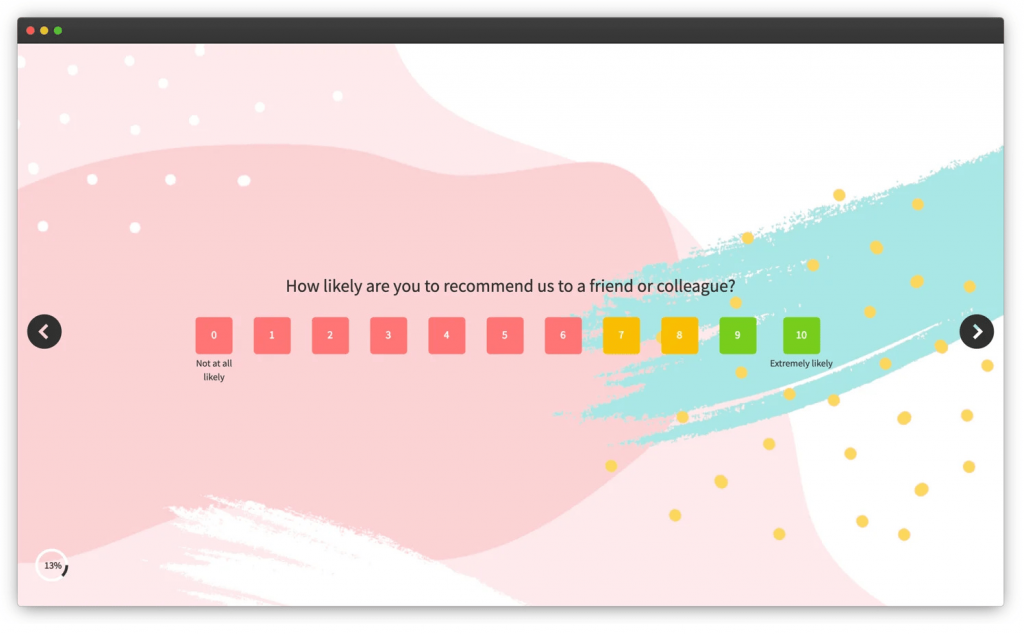
Last but not least on my list of the best Delighted alternatives is Zonka Feedback.
Zonka Feedback is one of the strong Delighted competitors because of its intuitive user dashboard. It gave me a quick overview of my account, including a summary of my surveys and the latest responses. I could easily access everything I needed to manage my feedback collection efficiently.
In addition to its user-friendly dashboard, Zonka Feedback offers other relevant features, such as creating custom surveys and reports, sending automated reminders, and analyzing your feedback data in real-time.
These features make Zonka Feedback a robust and sophisticated feedback tool that can easily rival Delighted.
What you’ll like:
- Customizable feedback forms to capture the voice of your customers.
- Survey distribution across multiple channels, like email, SMS, web, tablet, QR code, etc.
- Real-time reports to monitor your customer satisfaction and loyalty.
- Alerts and notifications to resolve customers to prevent churn rate of your customers.
- Integration with popular CRMs to automate your workflows and actions.
What you won’t like:
- Limited media options to add to surveys.
- It lags a little when dealing with large amounts of data.
Pricing: Starts at $49/month.
In Case You Missed It: 21+ Best Customer Feedback Tools You Should Try
My Evaluation Criteria
The evaluation of products or tools chosen for this article follows an unbiased, systematic approach that ensures a fair, insightful, and well-rounded review. This method employs six key factors:
- User Reviews / Ratings: Direct experiences from users, including ratings and feedback from reputable sites such as G2 and Capterra, provide a ground-level perspective. This feedback is critical in understanding overall satisfaction and potential problems.
- Essential Features & Functionality: The value of a product is ascertained by its core features and overall functionality. Through an in-depth exploration of these aspects, the practical usefulness and effectiveness of the tools are carefully evaluated.
- Ease of Use: The user-friendliness of a product or service is assessed, focusing on the design, interface, and navigation. This ensures a positive experience for users of all levels of expertise.
- Customer Support: The quality of customer support is examined, taking into account its efficiency and how well it supports users in different phases – setting up, addressing concerns, and resolving operational issues.
- Value for Money: Value for money is evaluated by comparing the quality, performance, and features. The goal is to help the reader understand whether they would be getting their money’s worth.
- Personal Experience/Expert’s Opinion or Favorites: This part of the evaluation criteria draws insightful observations from the personal experience of the writer and the opinions of industry experts.
Which Is the Best Delighted Alternative?
To help you further, I have narrowed down my list of the best Delighted alternatives to 3 outstanding options that I believe are the cream of the crop.
Option A: Qualaroo
Qualaroo offers some powerful features, such as intelligent targeting, customizable surveys, and actionable analytics, which make it one of the top Delighted competitors. Its ability to capture valuable user insights and analyze customer emotions allow you to make data-driven decisions.
Option B: Qualtrics
Qualtrics offers an extensive range of features and functionalities. With its comprehensive survey creation capabilities, advanced analytics, and robust integrations, it is no surprise that Qualtrics can significantly impact your user experience.
Option C: Hotjar
Hotjar is another tool that stands out from the pack. Its unique combination of heatmaps, session recordings, and user feedback surveys allows for unparalleled insights into user behavior.
While all 3 tools have their strengths, Qualaroo’s exceptional features and ease of use have made it my go-to feedback tool.
FREE. All Features. FOREVER!
Try our Forever FREE account with all premium features!

 We'd love your feedback!
We'd love your feedback! Thanks for your feedback!
Thanks for your feedback!





